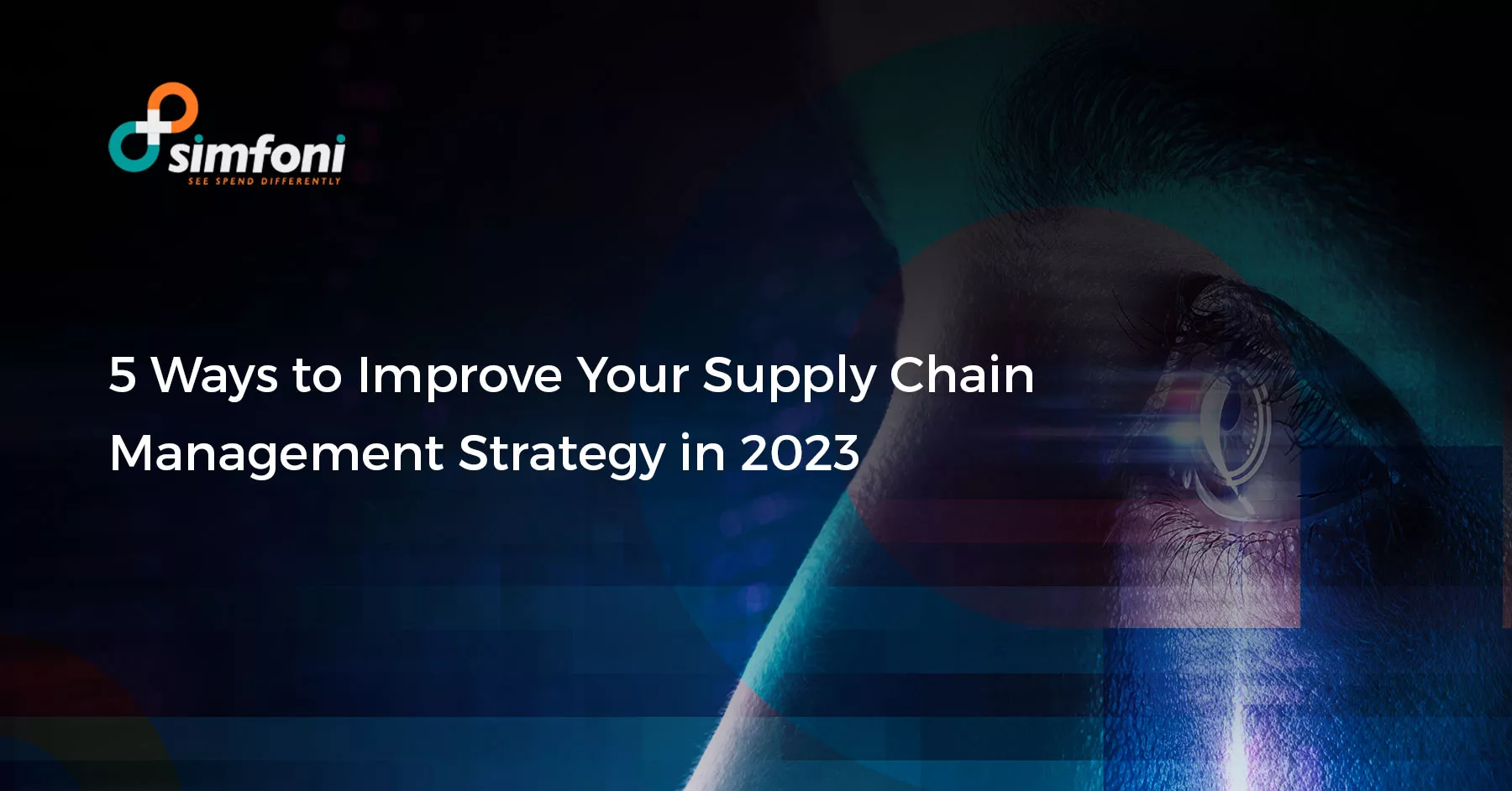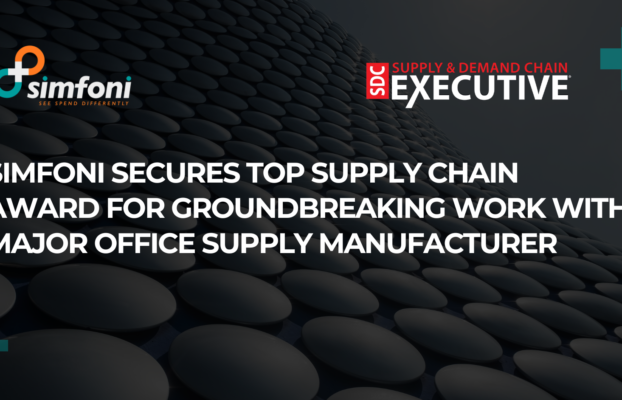Bottlenecks, demand swings, and unpredictable weather brought challenges for everyone during the 2022 holiday season. Here are some takeaways and a path to better supply chain management in 2023
Simfoni.com Tweet
In 2022, holiday staples such as turkey, wine and Christmas trees were in short supply due to worldwide supply chain issues. Traditional popular holiday retail sectors, such as electronics, experienced a 5.3 percent drop in overall spending due to issues in the supply chain that resulted in lower product availability. Manufacturing companies experienced major delays in delivery and were forced to delay shipping or stop selling products altogether. Some manufacturers even went out of business because they were unable to find alternative sources of supply.
Global supply chains are clearly still feeling the effects of shutdowns and other disruptions due to COVID and socioeconomic factors. In addition, the lack of supply chain visibility and savings management limits procurement and supply chain leaders’ ability to take a holistic view in framing strategies and making informed decisions. As we look back on the 2022 holiday season through the lens of supply chain management best practices, some important lessons can be learned and applied early on in 2023—so your supply chain is prepared to handle anything that comes your way this year.
How the Holiday Season Impacts Supply Chain Management and Your Business
After about two years of global supply chain issues, the current detangling of the supply chain is only the tip of the iceberg. While the situation has improved drastically from peak disruption last November, there are some lingering issues to deal with going into 2023. According to the Institute for Supply Management (ISM), trade uncertainty is still pervasive and will negatively impact business conditions throughout the rest of the year, particularly during the holiday season. Tariffs and high transportation costs are also expected to increase in 2023. Here are some of the biggest factors that likely affected your holiday supply chain in 2022, and likely will in the upcoming holiday season without a strong supply chain management strategy in place early on in the year.
1. Early Season Shoppers:
Rising inflation in 2022 created challenges for retailers as consumers looked for deals earlier as prices steadily rose throughout the year. Consumers are now looking for the best deals and available products as early as late summer, causing a strain on your inventory before the large shopping days in November and December. Without a proper supply chain management strategy in place, you can find your merchandise stretched thin and your suppliers unable to keep up with orders to supply you with the items you need to properly restock shelves during big shopping events.
2. Predicting Consumer Demand:
Inflation also caused many difficulties in predicting consumer demand this year, as certain products were more difficult to find at an appropriate price without sacrificing margin. What you think will be the hottest holiday gift turns out to be a slow mover in your business. On that same token, a slow inventory product suddenly trends in a big way, forcing you to dust off boxes and check inventory to see if you can meet rising customer demands.
Read More:- 5 Things Procurement Should Lose in 2023
3. Communication Issues:
Even with careful planning, communication between retailers and suppliers is often complicated by last-minute changes or demand spikes that weren’t factored into original forecasts. Suppliers, manufacturers, and third-party logistics companies are all striving to keep every business client happy during the holiday season, yet it only takes one changed invoice and missed communication to cause havoc with your supply chain.
4. Weather-Related Issues:

There is no way to predict when inclement weather will strike and which suppliers it will affect, leaving you scrambling to make other contingency plans. For instance, grocery stores in Buffalo, NY had to deal with a bomb-cyclone blizzard that knocked out power and cleared shelves amidst the Thanksgiving and Christmas grocery rush, on top of Western New York’s recent truck ban limiting supply across the region, which left stores at a standstill with no new product coming in and current product not moving due to storm-related closings.
5. Disruptions to Vendor Supply Chains:
While your supply chain may be on track for the holiday season, there can be significant disruptions to your vendor’s supply chain with their manufacturers. Factories can close, limit production lines, or send fewer shipments which can put a strain on suppliers. If you rely only on one source, you can see significant issues that will slow down your supply chain capabilities.
The Path to Better Supply Chain Management in 2023
To avoid these issues, your business needs to rely on an experienced partner to provide you with the robust solutions and flexible terms you’ll need for an effective supply chain management plan during the holiday season. Composable procurement solutions offered by Simfoni ensure you have the insights needed to handle seasonal surges while maintaining visibility and control across your entire supply chain. Here are some suggestions for ensuring you have a strong supply chain management plan in place for 2023 and beyond:
1. Integrate all of your data into a single platform:
Integrate all of your data into a single platform so you can proactively manage your supply chain and avoid delays caused by unexpected events. The increased visibility will allow you to quickly identify trends and adjust your business strategy as needed to optimize performance along the entire value chain.
2. Decrease the complexity of your supply chain:
Decrease the complexity of your supply chain by consolidating all of your vendor contracts into a single agreement that offers flexible terms and pre-negotiated rates.
3. Forecasting and demand planning:
Forecasting and demand planning can help mitigate the impact of unexpected events on your supply chain and better prepare you to meet customer expectations. By closely monitoring seasonal trends and working closely with your suppliers and other stakeholders, you can identify potential issues before they arise and develop backup plans if needed.
WEBINAR: Supply Chains and their Impact
4. Use predictive analytics:

Predictive analytics can help anticipate customer demand during the holiday season by analyzing past sales patterns and customer behavior to identify trends and help companies better understand how changes in economic conditions and weather might affect customer demand. With this information, companies can develop contingency plans and adjust their supply chain management strategy as needed.
5. Leverage your existing supplier relationships:
Leverage your existing supplier relationships to create new revenue streams and reduce overall costs by allowing you to more quickly and efficiently meet customer demand.
The time to prepare for the next holiday season is now, while the takeaways from 2022 are still top of mind. With a technology and innovation-driven approach and deep knowledge of procurement, logistics, and supply chain, Simfoni has built a robust platform that helps our customers set a strong foundation for their supply chain management strategy by allowing greater visibility into their data.











